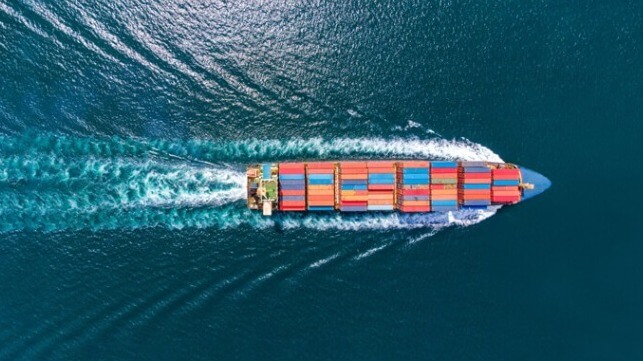Inmarsat: Data Usage Triples as Shipping Seeks Increased Connectivity

With ship managers increasingly using sophisticated data analytics and condition monitoring systems to enhance operations and concerns over improving the crew’s communications abilities, connectivity and high-speed data are becoming increasingly important. A new study from Inmarsat reveals a surge in maritime data usage over the past few years and the expectation that it will continue to grow quickly.
The internal study undertaken by Inmarsat, a leading provider of global, mobile satellite communications services, shows that data usage on commercial maritime vessels jumped more than threefold since 2019. The growth in demand and usage is continuing with the company reporting that data usage among Inmarsat maritime customers rose almost 70 percent in the past 12 months.
“More and more shipping companies are upgrading their satellite communications services and adopting new technologies for applications including route-planning, ship-to-shore broadband data transfers and to maximize fuel efficiency,” says Ben Palmer, President of Inmarsat Maritime, explaining the factors driving the rapid growth. “They are also ensuring that their crews remain connected with family and friends while at sea, the mandatory requirement now recognized by the Maritime Labour Convention.”
Analysis of data usage shows that it is on the rise among all commercial vessel types. Year-over-year demand for data was highest among container shipping companies, more than doubling (108 percent) in June 2022 compared to June 2021, according to Inmarsat. The use of connectivity increased by 70 percent among oil tanker operators and by 47 percent on bulk carriers over the same period the company reports.
The company, which said that it connects more vessels than any other provider, expects to see continued strong growth in data usage and further demands for improved connectivity as the industry proceeds with the adoption of new systems and technologies. They reported that the installed base for their Fleet Xpress satellite communications systems rose by 17 percent in the second quarter of 2022 compared to Q2 2021. The company reports its system is installed on almost 13,000 ships, with an order book of over 1,000 additional vessels.
To meet the demands for further improvements in connectivity, earlier this year, Inmarsat completed technical proof of concept tests for the terrestrial 5G mesh component of its new network known as ORCHESTRA. The tests took place in Singapore, one of the world’s busiest ports and according to the company, the network will provide spectrum-management and connectivity technology to deliver additional data capacity at key shipping hot spots via a shore-based terrestrial networks.?The 5G mesh network has the potential to integrate seamlessly with Inmarsat’s geostationary satellite constellations and a highly targeted low earth orbit (LEO) fleet to deliver the lowest average latency and fastest average speeds with unique resilience of any planned global service.
“As data demand continues to grow in the shipping industry, our ORCHESTRA testing in Singapore has shown in real-world cases how to enhance ship-to-shore and ship-to-ship connectivity, including distances, range, throughput and link availability,” said Palmer. “We are innovating with this technology because connectivity demand in key ports and shipping lanes is only going to increase further and lead to growing congestion.”
